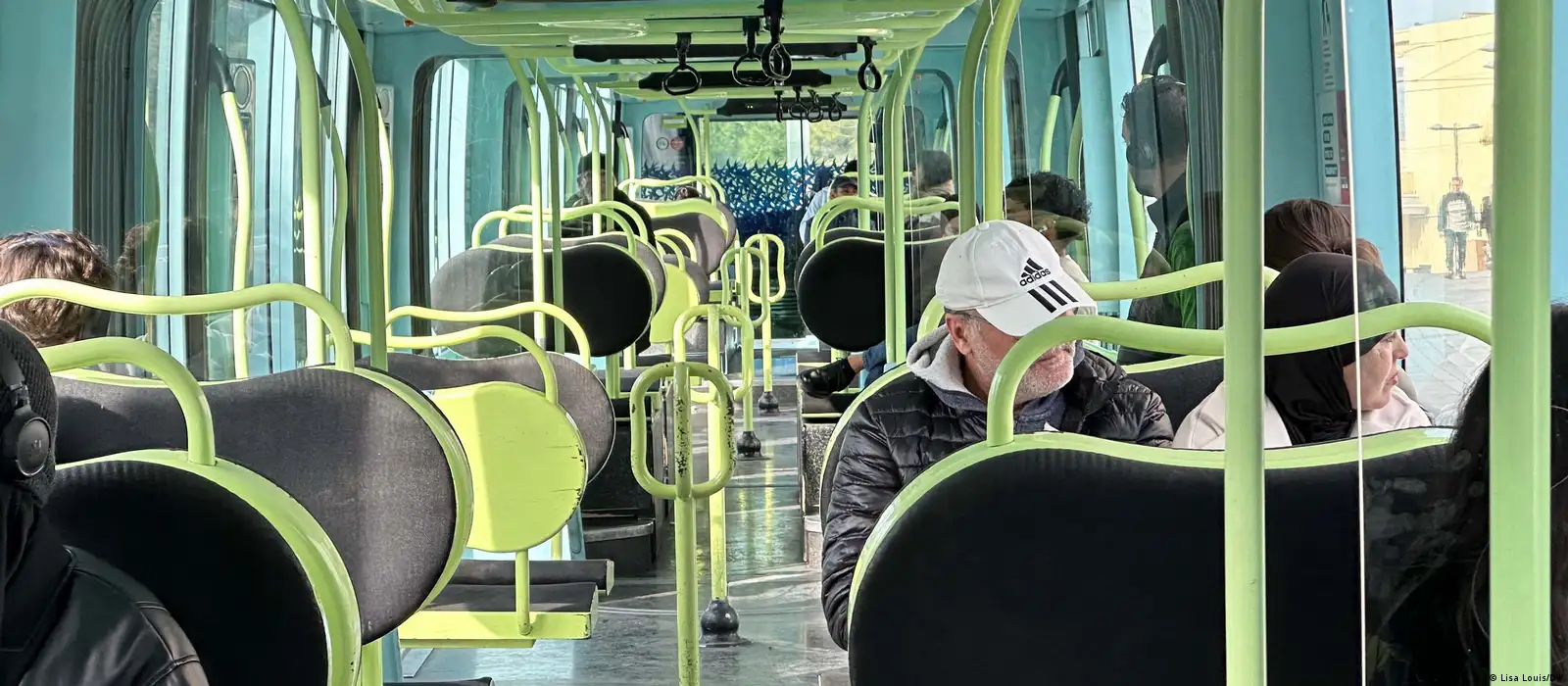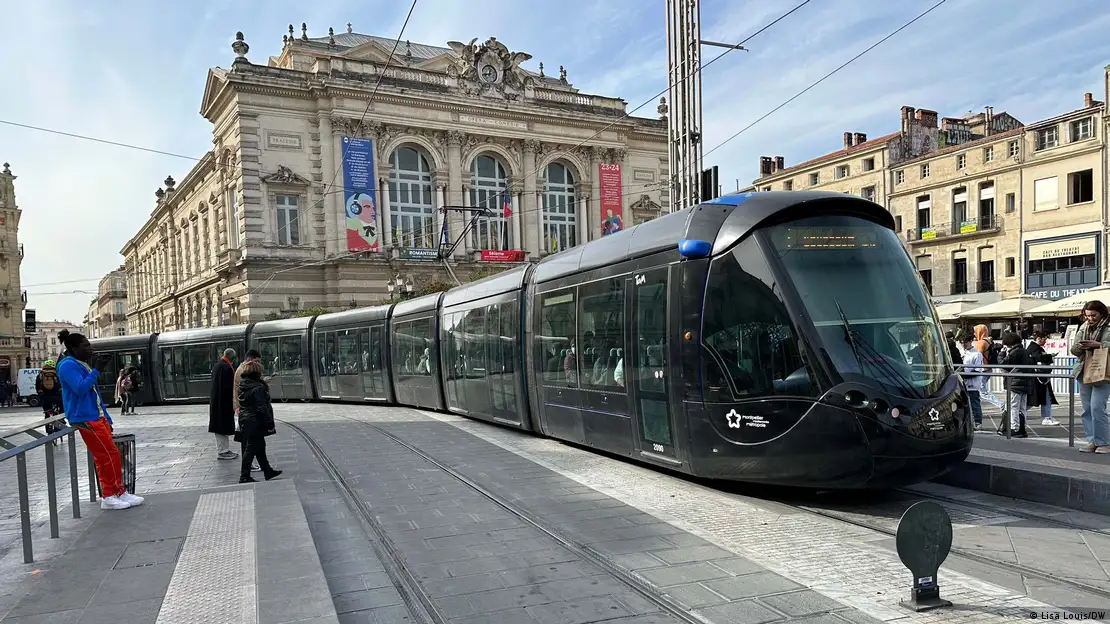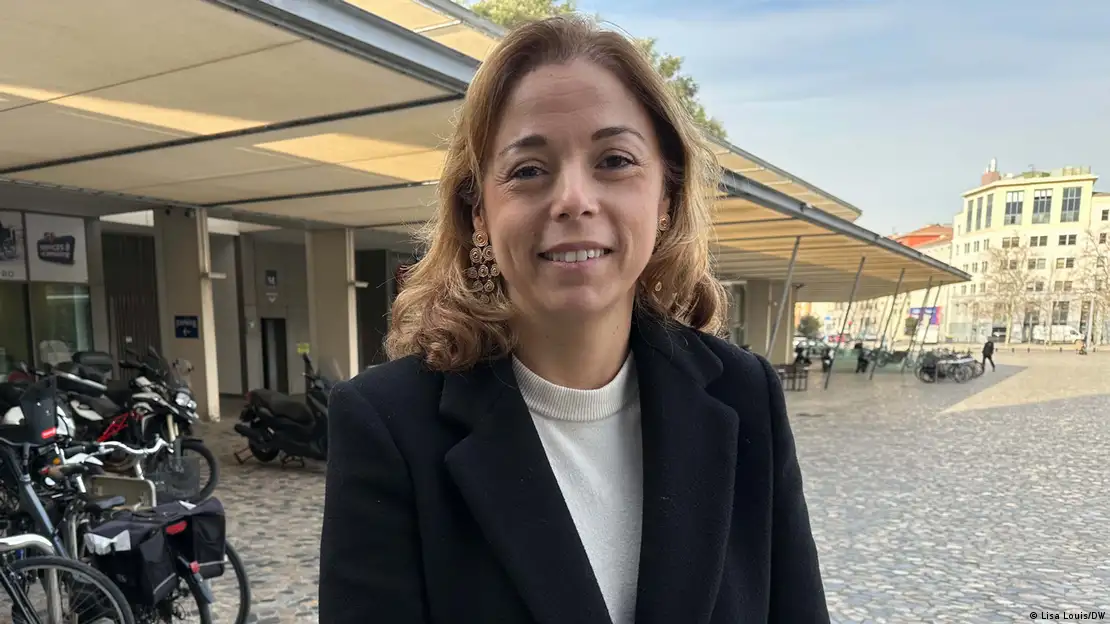
One of Europe’s Smallest Nations Tries a Big Idea: Free Public Transit
Since 2020, residents of Luxembourg have been able to ride trains and buses throughout the country without buying tickets. Is the policy paying off?
Since 2020, residents of Luxembourg have been able to ride trains and buses throughout the country without buying tickets. Is the policy paying off?

Luxembourg launched a tram service in 2017 in an effort to get more residents out of their automobiles.
Photographer: Olivier Matthys/Bloomberg
By
Feargus O'Sullivan
July 7, 2022 at 9:06 AM EDT
Sometimes, the Grand Duchy of Luxembourg looks so tidy and bucolic that walking down the street feels like strolling through an architect’s rendering.
Along the pristine streets of the tiny state’s capital, Luxembourg City, honey-colored sandstone buildings teeter improbably on the edge of ravines; new office towers full of financial services firms loom nearby. Riding a train out into the countryside prosperous-looking villages appear and disappear in the gaps between narrow, castle-topped valleys and fields of ripening corn.
Luxembourg’s roughly 640,000 citizens enjoy the world’s highest per capita income of any independent state (better even than tinier Monaco and Liechtenstein). But even this privileged pocket of Europe faces a few intractable problems. And one of them is cars.

Both vehicles and trams use the double-decked Pont Adolphe bridge in Luxembourg City.
Photo by Nicolas Economou/NurPhoto via Getty Images
Nowhere else in the European Union is quite as car-crazy as Luxembourg, which has the highest vehicle density on the continent, with 696 cars per 1,000 people as of 2020. Almost nine out of ten Luxembourgish households have a car; one in ten families have three or more. Low tariffs and taxes gave Luxembourg the cheapest diesel in the EU and the cheapest gas in Western Europe. In small towns, you’ll find Ferrari and Maserati dealerships. Traffic often moves at a crawl, while Luxembourg City, charm aside, is a checkerboard of parking lots. This summer, police are begging citizens not to drive to inland lake beaches that are jammed with illegally parked cars. With its population set to surpass 690,000 by 2030, Luxembourg risks choking on its automobiles.
To curb its driving addiction, this small country is trying an ambitious idea: On Feb. 29, 2020, it became the first nation in the world to make all public transit entirely free at point of use. With the exception of (not especially popular) first-class tickets, no one has paid a cent to ride a bus, tram or train within Luxembourg’s borders ever since.
The Costs of Going Free
The idea of charging passengers nothing to ride may seem like something only a tiny, rich country like Luxembourg could make feasible. (On top of pre-existing subsidies, the experiment will add 41 million euros ($43.4 million) to the government’s annual transportation costs.)But free transit programs have emerged in all kinds of cities and countries over the years as a means of addressing rising energy costs or traffic. Rome experimented with free buses in 1971; Austin, Texas, tried it in 1989 and 1990; Kansas City’s bus and streetcar systems have been fare-less since 2020; and Boston Mayor Michelle Wu has vowed to “Free the T” throughout the Massachusetts city, starting with a trio of fare-free bus routes. One of the longest-running efforts has been in Estonia’s capital, Tallinn, which has had free public transit for residents since 2013, while Estonians also pay no fares for rural bus journeys. Ticket-less transit has also recently arrived in the cities of Dunkirk, France, and the Czech Republic’s Frýdek-Místek.
Perhaps the largest variation on the model to date, however, has been in Germany, where for the three months of summer 2022, the state is offering travel passes valid on all urban and regional services (but not faster intercity trains) for the close-to-token cost of 9 euros per month.
It's easy to see the appeal of these policies for governments seeking ways to slash carbon emissions and aid residents hit with high gas prices. In European regions, where relatively reliable train and bus services (and high subsidies to support them) are standard, such policies might play a role in getting people out of private cars. They remove mobility barriers for poorer citizens and, in a world striving to decarbonize, can also remind voters that a lower-emissions world can also offer conveniences and advantages, not just sacrifices.

A train of the Luxembourg Railway enters the Pfaffenthal-Kirchberg station in 2020.
Photo: Oliver Dietze/dpa via Getty Images
Whether free transit works, however, depends on what your vision of “working” entails. For riders, abandoning tickets has certainly created a more frictionless system. It is now very easy to jump off a bus and on to a tram without needing to consider whether your ticket is still valid or where to get a new one. The sense of freedom is real: One owner of a cafe just a few minutes from Luxembourg City’s central station says that young people — and his teenage son in particular — are using the fare-less policy to go on jaunts around the country and discover it in ways that wouldn’t previously have been possible (a boon in a country where there isn’t a huge amount for young people to do).
Then again, paying fares was never a major burden for him — so lax were ticket-takers on buses and trams that he admits he stopped paying decades ago.
For other riders, though, the cost savings are more meaningful. “This policy is saving me close to 500 euros a year” says Max, a 26-year old special needs teacher who works in Luxembourg City but lives in France. (He asked Bloomberg CityLab not to use his last name.)
Sitting on a double-decker train rattling towards the French border city of Thionville, he acknowledges that, for him at least, the policy offered both financial and time advantages over driving. “It’s not just the cost that’s the issue,” he says. “If I drive home, there are so many jams and bottlenecks on the road towards the border it can take 60 to 75 minutes to get home. On the train I can make it in half that.”
The Car Remains King
But while Luxembourgers generally express a positive attitude to the free transit policy, there is little evidence as yet that it has reduced the number of cars on the road. In May 2022, congestion on Luxembourg’s roads was — depending on location — largely equivalent to or higher than levels in May 2019, before the free public transit policy was introduced.The reason for this, studies have shown, is that making transit free doesn’t in itself tempt people away from their cars. While removing fees may prove an incentive, it won’t compensate for other possible disadvantages, such as overcrowded, delayed or canceled trains — not uncommon in Luxembourg before the pandemic — or an inability to compete with the convenience of door-to-door travel. Meanwhile, data from elsewhere suggests that the most enthusiastic adopters of free travel policies tend to be people who would have otherwise walked or cycled.
”









